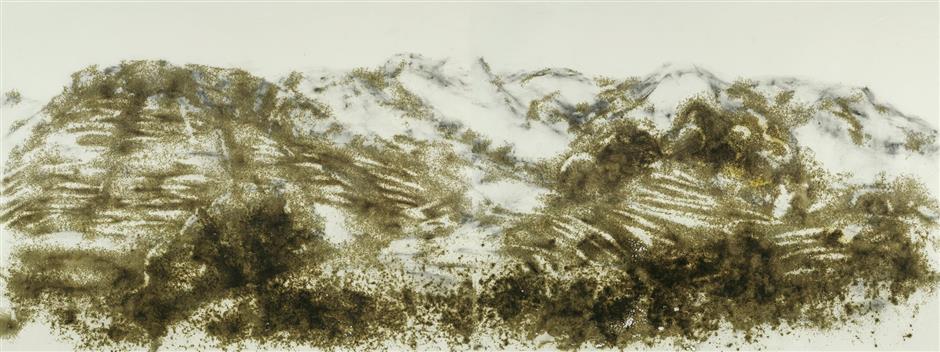Paper transformed using ingenuity and creativity

“Tea Hills” by Cai Guoqiang
Since Cai Lun found the right formula to produce the light, thin, strong and inexpensive material we call paper today in the Eastern Han Dynasty (AD 25-220), the invention has been widely considered as a symbol of ancient Chinese wisdom.
Throughout dynasties, a series of folk crafts were born on the foundation of paper, including paper cuts, lanterns and sculpture. Today, it is still a popular medium for Chinese artists.
At an exhibition in Zhejiang Art Museum of innovative paper work, visitors can see ordinary paper transformed through ingenuity and creativity.
The highlight is the work of Cai Guoqiang, who sprinkles gunpowder on paper and recreates classic works by past artists — but with a modern slant.
In “Tea Hills,” Cai uses gunpowder to create a landscape reminiscent of Longjing Village in the western part of Hangzhou. He uses different shades of black to invoke the perspective principle of traditional Chinese ink-wash painting.
The exhibition also features works by Shi Hui, Shen Lieyi and Qiu Zhijie.
Date: Through September 19, closed on Mondays
Address: Zhejiang Art Museum, 138 Nanshan Rd
Admission: Free
“Agriculture is Recreated for Seven Times” by Qiu Zhijie
















